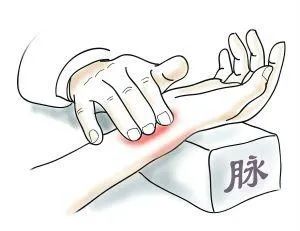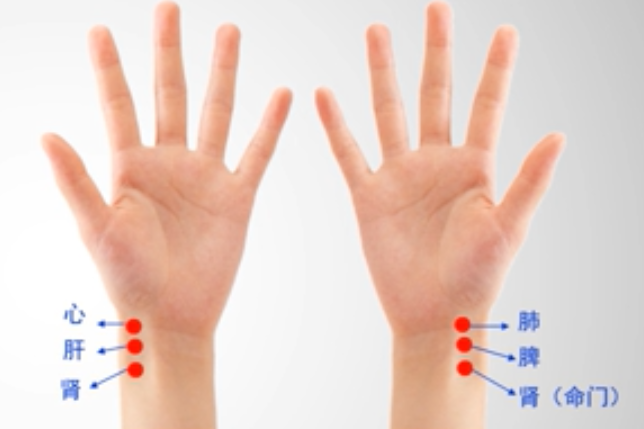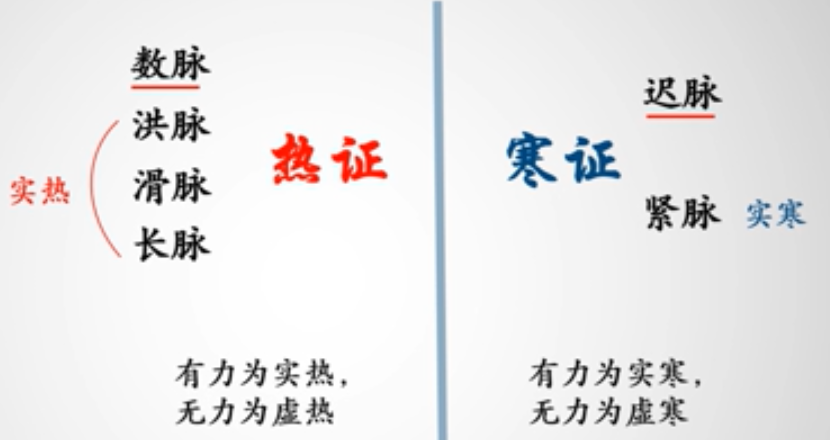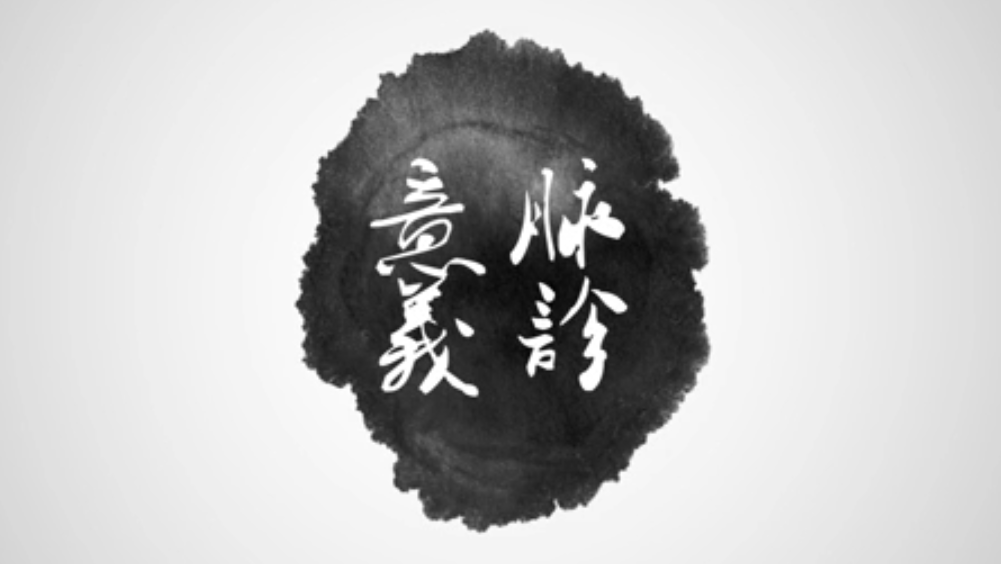Traditional Chinese Medicine Diagnosis – Pulse Diagnosis
Everyone is likely familiar with taking the pulse. Whenever we visit a TCM practitioner, they will check our pulse and can understand our health condition through this method. Many people are curious about how TCM can determine our physical state just by taking the pulse. Today, let us explore what pulse diagnosis in TCM is.

Pulse diagnosis is a diagnostic method that involves palpating the pulse at different parts of the body to observe changes in the pulse pattern. It is also known as pulse taking, pulse examination, and pulse pressing.
Pulse diagnosis is one of the four diagnostic methods in TCM (observation, listening, inquiry, and palpation), belonging to palpation and is an essential objective basis for syndrome differentiation and treatment. Palpation is a diagnostic method gradually formed by the Chinese people in their long-term struggle against diseases. Although it is the last of the four diagnostic methods, it is the most characteristic of TCM, being the only important diagnostic method that directly touches the patient’s body. Its long history, rich content, and extensive literature make it incomparable to the other three diagnostic methods.
In clinical practice, pulse diagnosis can infer the progression and prognosis of diseases. Clinically, it is essential to master the timing of pulse diagnosis, the patient’s position, the physician’s finger technique and pressure, and to ensure that each pulse is taken for at least 50 beats on each side. Additionally, understanding the variations in the pulse of healthy individuals is crucial for accurate pulse diagnosis.

Pulse diagnosis is a method where the physician uses their fingers to press on the patient’s arteries, observing the characteristics of the pulse to understand health or illness and differentiate between syndromes.
Pulse diagnosis relies on the sensitive touch of the fingers for experience and recognition. Therefore, learning pulse diagnosis requires familiarity with the basic knowledge of pulse theory and mastery of the basic skills of pulse taking, along with repeated practice and careful observation to gradually recognize various pulse patterns and effectively apply them in clinical settings.

Let us review the content we have learned previously:
Taking the pulse at the cun position is the primary method of pulse diagnosis in TCM today.
When diagnosing the pulse, the left hand examines the pulse of the right hand, and the right hand examines the pulse of the left hand. The key points for pulse taking can be summarized as: three fingers aligned, middle finger positioned at the guan, fingers pressing on the pulse ridge, and finger placement being appropriately spaced.
Characteristics of a normal pulse (ping mai):
1. Four to five beats per breath;
2. Not floating or sinking, not large or small, calm and gentle, smooth and strong;
3. All three positions (cun, guan, chi) can be felt, and the pulse is not interrupted when pressed deeply;
The characteristics of a normal pulse include having vitality, strength, and depth, but normal pulses can also exhibit physiological variations influenced by age, gender, body type, lifestyle, emotional state, seasonal climate, time of day, and geographical environment.
As long as there is vitality, strength, and depth, these physiological variations in the pulse still fall within the categories of normal and regular pulses, and should be differentiated from pathological pulses in clinical practice.

Modern clinical references mention a total of 28 types of pulses, but this course will only discuss 19 common types among them. We will learn according to four elements: position, rate, shape, and force across eight aspects:
Classified by pulse position: floating and sinking; classified by pulse rate: slow and rapid; classified by pulse width: flooding and thin; classified by pulse length: long and short; classified by pulse strength: weak and strong; classified by smoothness: slippery and choppy; classified by evenness: knotted, intermittent, and rapid; classified by tension: wiry, soft, tight, and relaxed, totaling nineteen pulse characteristics and their clinical significance.
Due to the multitude of pulse patterns, many of which are very similar, they can be difficult to master and remember. Therefore, we will categorize and outline the twenty-eight pulses, and we will also learn about analogous pulses, combined pulses, and true organ pulses. This will help to simplify and clarify the learning process.
Women have special physiological activities such as menstruation, pregnancy, and childbirth, and their related pathologies, thus diagnosing women’s pulses has certain particularities. The method for diagnosing children’s pulses differs from that of adults, often using the one-finger total examination of three positions method, abbreviated as one finger examining three positions.
Today we will learn the final part of pulse diagnosis: the clinical significance of pulse diagnosis.

Section Seven: The Significance of Pulse Diagnosis
Pulse diagnosis is an indispensable step and content in TCM clinical practice. The importance of pulse patterns lies in their ability to convey physiological and pathological information from various parts of the body, serving as a window into internal functional changes and providing important evidence for diagnosing diseases.
The significance of pulse diagnosis can be summarized in the following four aspects:
1. Differentiating the location of the disease:
For example, floating indicates exterior conditions, while sinking indicates interior conditions; the left hand’s cun position corresponds to the heart, liver, gallbladder, and kidney, while the right hand’s cun position corresponds to the lung, spleen, stomach, and kidney.

2. Judging the nature of the disease:
For example, the eight principles of pulse—floating, sinking, slow, rapid, large, small, slippery, and choppy—indicate exterior/interior, cold/heat, deficiency/excess. For instance, rapid pulses, flooding pulses, slippery pulses, and long pulses are often seen in heat syndromes, where a rapid and strong pulse indicates excess heat, while a rapid and weak pulse indicates deficient heat. Flooding, slippery, and long pulses indicate sufficient righteous qi and abundant qi and blood, thus these three pulse types are commonly seen in excess heat syndromes.
Slow pulses and tight pulses are often seen in cold syndromes, where a slow and strong pulse indicates excess cold, while a slow and weak pulse indicates deficient cold. Tight pulses indicate strong righteous qi and are only seen in excess cold syndromes.

3. Distinguishing the strength of pathogenic and righteous qi:
A strong pulse often indicates an excess of pathogenic qi and a deficiency of righteous qi;
A weak pulse often indicates insufficient qi and blood, essence deficiency, and weakened yang qi.
4. Inferring the progression of the disease:
For external diseases: the pulse changes from floating to sinking, indicating that the pathogenic factor has moved from the exterior to the interior; from sinking to floating indicates that the pathogenic factor has moved from the interior to the exterior.
For chronic diseases: a gentle pulse or gradually increasing pulse strength suggests that the stomach qi is recovering and the disease is improving; a weak and large pulse in chronic illness suggests that the pathogenic factor is strong and the righteous qi is weak, indicating a worsening condition.
For febrile diseases: the pulse is often slippery and rapid. If sweating occurs and the fever subsides, and the pulse becomes gentle, it indicates improvement; if there is profuse sweating, the fever subsides, the body feels cool, and the pulse is rapid and agitated, it indicates disease progression and potential loss of yang.
Through pulse diagnosis, one can understand the deficiency and excess of qi and blood, the rise and fall of yin and yang, the strength of organ functions, and the fluctuations of pathogenic and righteous qi, guiding treatment directions.
Pulse diagnosis is extremely important for TCM practitioners. If a physician cannot recognize the pulse, they cannot differentiate syndromes, and without syndrome differentiation, they cannot formulate treatment plans. Therefore, only by mastering pulse theory can one become a good physician. For learners, mastering self-pulse diagnosis is also a cost-effective and valuable tool for assessing one’s health.

Of course, whether for physicians or learners, initial learning of pulse diagnosis may feel “clear in the heart, difficult under the fingers”, especially since many pulse patterns are described using metaphorical terms, such as “like a light knife scraping bamboo,” “like cotton floating on water,” “like pressing piano strings,” and “like a thousand strings turning around,” etc. This requires learners to continuously experience, summarize, and accumulate knowledge in clinical practice or daily life. Additionally, it is recommended that learners seek guidance from experienced physicians, as this often yields better results with less effort.
The above is the complete content of TCM pulse diagnosis. Starting tomorrow, we will learn about the content of the TCM diagnostic method of auscultation.


Long press to recognize the QR code and follow Xile Liangyao
Let us discover the wonders of TCM and bring TCM closer to life.

